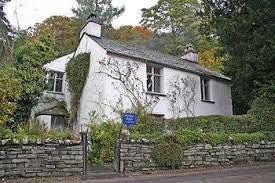Cottages of England
Slate house signs are suitable for all types of properties but are a particularly popular choice for cottages.
In the United Kingdom a cottage is typically, a small house. The word cottage used to only be used for a small old-fashioned house but nowadays a cottage can be a new build, often cosy dwelling, mostly in a rural or semi-rural location, and designed to resemble the traditional older buildings.
Cottages can be detached, semi-detached or terraced and range from a labourer or fisherman’s one roomed house, often attached to a larger property, to a two up, two down, right through to a twelve-roomed farmhouse like Anne Hathaway’s Cottage where Anne Hathaway, the wife of William Shakespeare, lived as a child in the village of Shottery in Warwickshire.
This exquisitely picturesque cottage is probably one of England’s most famous buildings and is the second favourite Shakespearian property. Part of the building dates from the mid-fifteenth century, and some of the furniture belonged to the Hathaway’s and their descendants.
Stone steps lead to the entrance of the house, which is entered through a low door. The house has uneven stone flooring on the ground floor, and uneven wooden flooring on the first floor. The ground floor itself comprises different levels of stone flagging. A steep spiral wooden staircase leads to the first floor and doors and beams are very low.
The garden is outstanding.
Dove cottage is another famous English cottage. It is situated on the edge of Grasmere in the Lake District and for 8 years it was the home of the poet William Wordsworth. At first he lived there with his sister Dorothy Wordsworth. But later he married his wife Mary and she too moved in to the cottage. They had three children in quick succession and with the cottage being too small for three adults and three children, they had to seek larger lodgings.
Dove Cottage was built in the early 17th century. It was probably built as a public house, and it is first recorded as the “Dove and Olive”, an inn included in a list of public houses in 1617. It remained a public house, sometimes called the “Dove and Olive Branch”, until it closed in 1793.
The building is made from local stone, with lime washed walls and a slate roof. There are four rooms downstairs, and another four upstairs. The ground floor rooms retain the oak panels and slate floors often found in Lakeland houses of the period.
The cottage was acquired by the Wordsworth Trust in 1890 and opened to the public in 1891. The house is a Grade 1 listed building, and remains largely unchanged from Wordsworth’s day.
Although not as famous as Anne Hathaway’s cottage, it still receives approximately 70,000 visitors a year.

